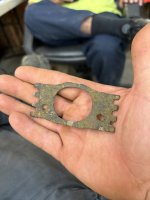jopher
Bronze Member
Im a new but enthusiastic detectorist.I've been shooting with an IDX Pro for about a year and a half.I cant complain as this unit has paid for itself several times over,however, it leaves me wanting to go deeper.Deeper into the ground and deeper into the water.I cant put out for two machines at this time so Im trying to commit to one deep seeking submersible.I think I've got it down to a CZ20 or an Excalibur.Ive looked at the techno jargon and the field reviews but I really need some advise from the people who use these machines.Whats the learning curve? How do they stack up on dry land? Are you more likely to have problems with one or the other down the road?.....Leaks....etc.
It looks like both detectors are priced about the same. The fisher comes with a lifetime warranty.The Minelab seems to go a little deeper on most targets(In wet sand).Ive seen no "dry land " tests on either unit. What to do...what to do I live in Michigan so salt water would rarely be a factor.
I live in Michigan so salt water would rarely be a factor.
Any input would be greatly appreciated....Thanks JO......and HH
It looks like both detectors are priced about the same. The fisher comes with a lifetime warranty.The Minelab seems to go a little deeper on most targets(In wet sand).Ive seen no "dry land " tests on either unit. What to do...what to do
 I live in Michigan so salt water would rarely be a factor.
I live in Michigan so salt water would rarely be a factor.Any input would be greatly appreciated....Thanks JO......and HH
Amazon Forum Fav 👍
Upvote
0






